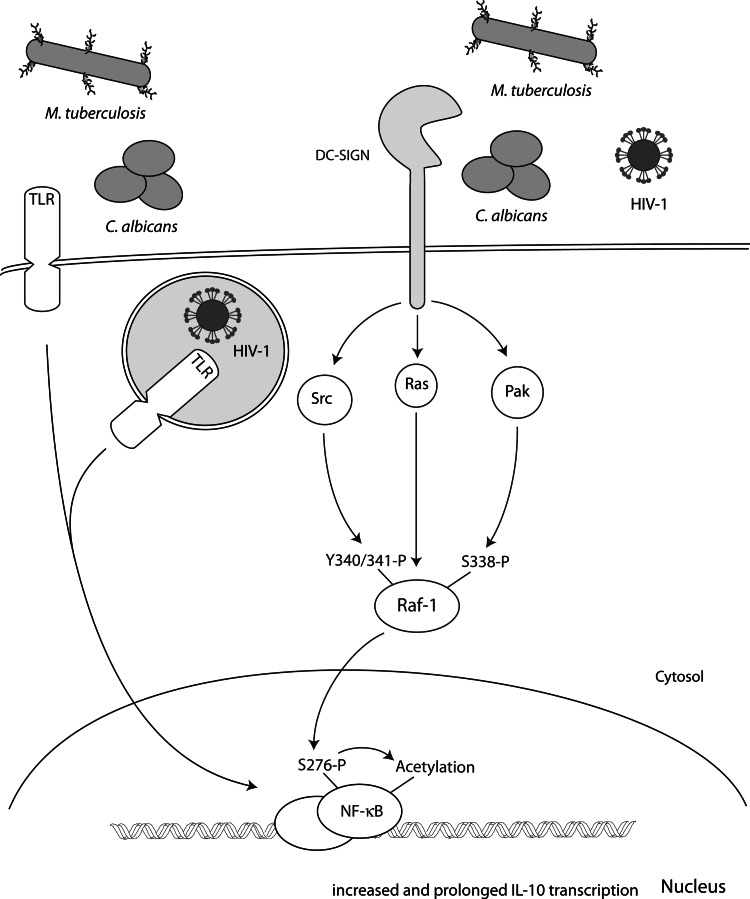Fig. 1.
DC-SIGN signaling by mycobacteria, viruses and fungi. Binding of several pathogens including M. tuberculosis, C. albicans and HIV-1 to DC-SIGN activates three routes that converge to activate Raf-1: activation of Ras leads to binding to Raf-1 and induces conformational changes that allow for subsequent phosphorylation of Raf-1 by Src and Pak kinases; Src kinases induce the phosphorylation of Raf-1 at residue Tyr340/341, whereas Rho GTPase-dependent activation of Pak kinases results in phosphorylation of Raf-1 at Ser338. After translocation of NF-κB by TLR-stimulation, DC-SIGN-induced Raf-1 activation mediates the phosphorylation of NF-κB subunit p65 at Ser276, which in turn leads to p65-acetylation. Acetylation of p65 both prolongs and increases IL-10 transcription, resulting in increased IL-10 production

